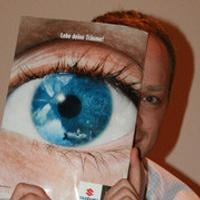jedna z najviac vymakanych veci ku akej sa da vobec dostat, patri k tym "nekonecnym nahravkam" ku ktorym sa da prakticky stale vratit :)
Easy Rider Music From the Soundtrack
01 - Pusher - Steppenwolf
02 - Born To Be Wild - Steppenwolf
03 - Weight - Smith
04 - Wasn't Born To Follow - The Byrds
05 - If You Want To Be A Bird - The Holy Modal Rounders
06 - Don't Bogart Me (Don't Bogart That Joint) - Fraternity Of Man
07 - If 6 Was 9 - Jimi Hendrix Experience
08 - Kyrie Eleison_Mardi Gras (When The Saints) - The Electric Prunes
09 - It's Alright, Ma (I'm Only Bleeding) - Roger McGuinn
10 - Ballad Of Easy Rider - Roger McGuinn
pw = missie
link na stiahnutie najdete na original post clanku:
- http://1900ginstreet.blogspot.com/2007/02/musicians-of-nile.html
na tomto blogu: http://ksoze.blogspot.com/
som nasiel
James Brown - Dynamite X (2007)
Temas
01. Sex Machine (Readymade Jazz Defector)
02. Give It Up Or Turnit A Loose (dZihan & Kamien Remix)
03. Call Me Super Bad (Cay Taylan Remix)
04. Give It Up Or Turnit A Loose (Fantasista Re-Formation)
05. Funky Drummer (Listen To The Muro Mix)
06. Cold Sweat (Captain Funk Dry Mix)
07. Sunny (Funk Master J.B. vs Funk Master J.S. Hardboiled Remix)
08. Soul Power (Jungle Funk Mix)
09. Get On The Good Foot (Mr. Drunk Remix)
10. Soul Power (Co-Fusion Mix)
11. Call Me Super Bad (Cornelius Rework)
http://ksoze.blogspot.com/2007/02/james-brown-dynamite-x-2007.html
a celkom podarenu zalezitost zo skveleho filmu
OST - City of God
tracklist:
1. Meu Nome E Ze - Ed Cortes & Antonio Pinto
2. Vida De Otario - Ed Cortes & Antonio Pinto
3. Funk De Virada - Antonio Pinto
4. Estoria Da Boca - Ed Cortes & Antonio Pinto
5. Na Rua, Na Chuva, Na Fazenda (Casinha De Sape) - Hyldon
6. A Transa - Antonio Pinto
7. Metamorfose Ambulante - Raul Seixas
8. Nem Vem Que Nao Tem - Simonal
9. Preciso Me Encontrar - Cartola
10. Alvorada - Cartola
11. Convite Para Vida - Antonio Pinto, S. Jorge Et Fabio Goes
12. No Caminho Do Bem - Tim Maia
13. Morte Ze Pequeno - Ed Cortes & Antonio Pinto
14. Batucada - DJ Camilo & DJ Yah [Remix]
http://ksoze.blogspot.com/2007/02/ost-city-of-god.html
a este jednu klasiku
INXS - Kick (Japan Special Edition)
1. Guns In The Sky
2. New Sensation
3. Devil Inside
4. Need You Tonight
5. Mediate
6. The Loved One
7. Wild Life
8. Never Tear Us Apart
9. Mystify
10. Kick
11. Calling All Nations
12. Tiny Daggers
13. Devil Inside (Remix Version)
14. New Sensation ( Nick 12" Mix)
15. Move On
16. Need You Tonight (Mendelsohn Mix)
17. Different World
18. Guns In The Sky (Kick Ass Mix)
http://ksoze.blogspot.com/2007/02/inxs-kick-japan-special-edition.html
Sex Pistols, raritne interviews, bootlegs a pod najdete
na tejto adrese:
http://rapidshare.com/users/7PT12O
Klasika
Miles Davis and the "Lost Quintet"
"A New Direction"
Miles Davis' late 1969/early 1970 performances with the "Lost Quintet" (MilesDavis (tpt); Wayne Shorter (ss, ts); Chick Corea (el-p); Dave Holland(b, el-b); Jack DeJohnette (d)) are unquestionably some of the mostexciting of this long career. Named for the fact that they neverrecorded as a five-man lineup in the studio, and up until the 2001release of Live At Fillmore East (March 7, 1970): It's About That Time,had never been featured on an official release, the "Lost Quintet"played an overwhelmingly important role in bridging Miles' older, morefamiliar material with his new electric direction. This meant that setssaw the unlikely pairing of standards like "'Round Midnight" or "I FallIn Love Too Easily" with "Bitches Brew" and "Miles Run The VoodooDown," often segueing into one another to create a singular suite, andall overflowing with incredible intensity. A monumental task thatproduced amazing results. Jack DeJohnette and Chick Corea areabsolutely ferocious on both of these recordings.
July 25, 1969
La Pinède, Juan-les-Pins
1. Directions
2. Miles Runs the Voodoo Down
3. Milestones
4. Footprints
5. 'Round Midnight
6. It's About That Time
7. Sanctuary/The Theme
November 3, 1969
Salle Pleyel, Paris (First Concert)
1. Directions
2. Bitches Brew
3. Paraphanalia
4. Riot
5. I Fall In Love Too Easily
5. Sanctuary
6. Miles Runs The Voodoo Down/The Theme
http://theheatwarps.blogspot.com/2007/02/new-direction.html
no a k zaveru sa dostavame ku spickovemu blogu avantgardnej musix
http://mutant-sounds.blogspot.com/
http://mutant-sounds.blogspot.com/
http://mutant-sounds.blogspot.com/
http://mutant-sounds.blogspot.com/
http://mutant-sounds.blogspot.com/
no a pozrime sa k comu sa mozte dostat
nasledujuca musix je pre zvukofilov, industrialfilov, ufilov a vsetkych tych co chcu okusit trosku inej hudby
V/A:Ohrensausen+Ohrenschrauben,LPs,1985/6,Germany
Ohrenschrauben(1985)Tracklisting:A1 Whitehouse My Cock's On Fire (12:56) A2 H.N.A.S. Christoph Yööl A (5:53) A3 Vagina Dentata Organ Kill Baby, Kill (1:53) B1 New Blockaders, The / Organum "----" (2:41) B2 Toll There Must Be More Than This (3:58) B3 Current 93 I'm The One (5:11) B4 P16.D4 (Virtuell) Ausgemerzt (2:01) B5 Nurse With Wound The Poo Poo Song (3:16) B6 Haters, The Crasbreak (0:59)
Ohrensausen(1986)Tracklisting:A1 Chrystal Belle Scrodd Split And Well Hung (2:19) A2 Nurse With Wound The Cockroach Of Del Monte (4:47) A3 Coil & Boyd Rice His Body Was A Playing Ground For The Nazi Elite (3:22) A4 Sema The Over Yellow (4:01) A5 Smegma Wonders Of The Human Body (2:53) A6 Duka Bass Band Die Ameise Von Rom (2:19) B1 H.N.A.S. Speck Des Jahres (4:37) B2 Asmus Tietchens Gift Im Lift (5:13) B3 Mieses Gegonge Salz (2:30) B4 P16.D4 Ausgemerzt (Virtuell) (5:09)
B5 Duka Bass Band Bitterböse Blasmusik (2:24)
link na stiahnutie najdete dolu v originale clanku tu
http://mutant-sounds.blogspot.com/2007/02/vaohrensausenohrenschraubenlps19856germ.html
dalsia prazvlastna zalezitost (skor improvizacno / ticho / akusticko / ...neviemaka ale nie je to hlukove a je to raritka
AMM & Musica Elettronica Viva (MEV)- Live Electronic Music Improvised ,LP, 1968,UK/ITALY/USA,NWW list!
AMMwas initially composed of Keith Rowe on guitar, Lou Gare on saxophoneand Eddie Prévost on drums. Rowe and Gare were members of MikeWestbrook's band; Prévost and Gare were also in a hard bop jazzquintet. The three men shared a common interest in exploring musicbeyond the boundaries of conventional jazz, as part of a largermovement that helped spawn European free jazz and free improvisation.
NoAMM performance is ever planned; each is unique and spontaneous. Themusicians vowed never to rehearse and never to discuss what they hadplayed. The musicians tend to avoid any conventional melody, harmony orrhythm, and seek out an ensemble sound that often obscures anyindividual's role. It is often difficult to discern which musicalinstrument is making which specific sound on an AMM recording, due inpart to liberal use of various extended techniques on their instruments.
Membersof the group have come and gone over the years, but Rowe and Prévosthave been present for most recordings and performances; the latter hasbeen the only constant in the nearly four decades of AMM music.
AMMreleased their first recording, AMMusic 1966, on Electra Records UK in1966. It had some initial similarities to free jazz, due in part toGare's saxophone. One critic has written, however, that the resemblancewas rather slight: "the overall sound of the group, even in 1966, wasso different, so idiosyncratic, that it's not at all surprising thatboth new jazz and contemporary classical audiences were baffled, if nothorrified." [5] Lawrence Sheaff played with the early AMM; he had beena jazz bassist, but on AMMMusic, he played cello, accordion and otherinstruments. Percussionist Christopher Hobbs (a student of CorneliusCardew) also played with AMM in the late 1960s.
The next AMMmaterial to see release were the important The Crypt sessions from June12, 1968. Further "out" and even less conventional than earliermaterial, one critic has written of it that "an eerie sensationinevitably accompanies each listen to the raw streams of electric noisechanneled on AMM's second album and early masterpiece, The Crypt. Toears informed by the twenty-first century, it's the uncanny feeling oflistening to three-and-a-half decades of experimental music history asdelivered in a chillingly prescient sort of reverse premonition... It'sa little unnerving that the only records that seem to accuratelydescribe the brave new soundworld harnessed on The Crypt came intobeing well after its creation."
The Crypt sessions have been issuedmany times, twice in the 1980s as a double LP, and it still available(with extra material, billed as "The Complete Sessions") on a double CDfrom Matchless Recordings. The Crypt continues to inspire adventurouslisteners; in the liner notes to the 1992 double CD, Prévost writes,"Despite being (arguably) the most 'difficult' material on Matchless,The Crypt has been a mainstay for the label. It obviously pays not tounderestimate the audience. Its continued success has enabled us torelease other works. So we felt committed, obliged almost, to keep itavailable... this music has proved itself not to be ephemeral."Composer Cornelius Cardew joined AMM in 1966, performing on piano andcello. He worked with AMM intermittently until he abandoned his earlierexperimental music in the late 1970s (Cardew died in an unsolved autoaccident in 1981). Composer Christian Wolff performed with AMM in 1968.Cardew and Rowe became committed to socialism and to Maoism, andthought that AMM's music should reflect their sociopolitical outlook.Prévost accuses the pair of "cultural bullying", and there was tensionin the group, resulting in some AMM performances being made byalternating duos: Rowe and Cardew, Prévost and Gare.
1970sThispersonal and political tension culminated with a long period (about1972 to 1976) when AMM was rarely active, and then usually as aPrévost-Gare duo. This was arguably AMM's most jazz-like era, withGare's sputtering, squawking saxophone (unique but showing theinfluence of John Gilmore and Albert Ayler) brought to the fore,although Prévost has stated the music was "decidedly non-jazz."
Rowe rejoined in the mid-1970s, and shortly thereafter, Gare departed, leaving a Rowe-Prévost duo for a period.
1980s and 1990sPianistJohn Tilbury — previously an occasional AMM collaborator — joined inabout 1980. His shimmering Feldmanesque playing brought a measure ofconventionality to AMM (relatively speaking); unlike Rowe or Prévost,Tilbury's instrument was nearly always recognizable in conventionalterms. This version of AMM generally explored quieter, more meditativesounds, perhaps having more in common with minimalism -- though theycould generate a cacophonous racket when so inclined. Of this period,one critic has noted that "their ability, after more than 35 years as afunctioning unit, to avoid routines and ruts while retaining anunmistakable "AMM-ness" is astonishing." [9] Perhaps the most notableshift was in Rowe's approach: his playing grew increasingly subtle, andwas often described in painterly terms, as though he were offering acanvas for the other musicians to color.
Later collaborators haveincluded saxophonist Evan Parker, cellist Rohan de Saram, andclarinetist Ian Mitchell. Christian Wolff also returned as acollaborator for a concert at the Conway Hall in London in 2001.Prévost has reported that of all their collaborators, Parker and Wolffbest grasped the AMM aesthetic. 2000sThePrévost/Rowe/Tilbury line-up remained stable for two decades. But sinceabout 2000, Rowe's increasing involvement with what has become known as"electroacoustic improvisation" ("eai" for short), especially under theaegis of Jon Abbey's Erstwhile Records, meant that more of his musicalactivities began to take place outside AMM. Rowe has reported that hefelt somewhat limited having been almost exlusively a Matchless Recordsartist, and that he wanted to explore music outside of AMM. Tensionbetween Rowe and Prévost was exacerbated by the appearance of Prévost'ssecond book of essays, Minute Particulars, which contained somedisparaging comments about Rowe, who then left the group. In his reviewof Prévost's book, Walter Horn notes that while Prévost offers oftenscathing opinions of many people, Rowe is singled out for multiplebarbs, and "one can hardly fail to wonder whether there's something ofa personal nature lurking behind the barrage of what are superficiallytheoretical complaints."
The trio's last performance with Rowe isdocumented on the 2005 double-CD Apogee. The set is shared with anotherof the electronic improvisational ensembles that emerged during the1960s: Musica Elettronica Viva (MEV). The first CD is a studiorecording in a joint session in England on April 30th 2004 featuringMEV's Alvin Curran, Richard Teitelbaum and Frederic Rzewski withPrévost-Rowe-Tilbury. This is the first occasion that the two ensembleshave performed together, but not the first time they have shared asplit release: each outfit filled a side of the LP Live ElectronicMusic Improvised, released on a US label in 1968 (AMM's side featuresexcerpts from The Crypt sessions; MEV's side is an excerpt from theirmagnum opus "Spacecraft."). The second CD consists of the performancesthat each group gave at a festival held in London on May 1, 2004.
Prévostand Tilbury continue to record and perform as AMM. They performed inLondon during December, 2004, with Sachiko M joining as a guest, at the2005 LMC Festival of Experimental Music, with David Jackman as a guest,and at a festival of experimental music in Belgium in February 2006.They also released a duo CD as AMM, Norwich, during 2005.
Musica Elettronica Viva (MEV)is a live acoustic/electronic improvisational group formed in Rome in1966 by Alvin Curran, Richard Teitelbaum, Frederic Rzewski, AllanBryant, Carol Plantamura, Ivan Vandor, and Jon Phetteplace.
Theywere early experimenters with the use of synthesizers to transformsounds: a 1967 concert in Berlin included a performance of John Cage'sSolo for Voice 2 with Plantamura's voice transformed through a Moogsynthesizer. They also used such "non-musical" objects as amplifiedpanes of glass and olive oil cans, and their performances achievednotoriety in Italy for their ability to generate riots.
Theirrecordings include Spacecraft, recorded in Cologne in 1967 by Bryant,Curran, Rzewski, Teitelbaum and Vandor Unified Patchwork Theory,recorded in Zurich in 1990 by Curran, Rzewski, Teitelbaum, Steve Lacyand Garrett List -- both of the above rereleased in 2001 on the CD,"Spacecraft/Unified Patchwork Theory" (Alga Marghen, Plana-M 15NMN.038)
Friday,recorded in London in 1969 by Curran, Rzewski, Teitelbaum, FrancoCataldi and Gunther Carius "The Sound Pool," recorded 1969, reissued1998 (Spalax CD14969) Active to this day, 2005 saw the release of anMEV double CD, Apogee, shared with another of the electronicimprovisational ensembles that emerged during the 1960s: AMM. The firstCD is a studio recording in a joint session in England on April 30,2004 featuring MEV's Curran, Teitelbaum and Rzewski with the threemembers of AMM. This is the first occasion that the two ensembles haveperformed together, but not the first time they have shared a splitrelease - each outfit filled a side of the LP Live Electronic MusicImprovised, released on a US label in 1968. The second CD consists ofthe performances that each group gave at a festival held in London onMay 1, 2004.
While in Rome during the sixties, the MEV studio was onthe ground floor of a building in Via Pietro Peretti, in the Trastevereneighborhood. Around the corner with Via de' Genovesi, lived AlanBryant on the first floor. Three blocks away, in Via della Luce 55,fourth and last floor, lived Frederic Rzewski, and at No. 66, livedRichard Teitelbaum on the third floor. Carol Plantamura lived on thecorner of Via della Luce and Via Giulio Cesare Santini. Alvin Curranlived 2 km away, in Via dell'Orso, near Piazza Navona.
All from Wikipedia
http://mutant-sounds.blogspot.com/2007/02/amm-musica-elettronica-viva-mev-live.html
jedeme dal
ALL OF DEADBOLT'S CDS ARE PERFECT SOUNDTRACKS FOR:...
...GETTINGDRUNK IN THE DESERT, DRIVING THRU THE DESERT TO VEGAS, GOING ONHOMICIDAL RAMPAGES DRESSED UP LIKE PATCHES, & GOING TO TIJUANA (ATYOUR OWN RISK).
Deadbolt "Zulu Death Mask" 1998 Hereis Deadbolt's fourth album, continuing to cement their image as "theworld's scariest band." These tough guys from San Diego tell tales ofcorruption, revenge, exotic rituals, and psychotic clowns ("the onlygood clown is a dead clown"), all over a background of dark surf-styleguitar melodies. Deadbolt is one of the few bands I've seen with oneguitarist and two bass players. The instrumental parts on this one arereal laid-back and heavy, but also kinda catchy, which works well withthe low-key vocals. So if you're not just playing this as surfybackground music but actually paying attention to the storylines inthese tunes, the benefit is that you get the jokes. Definitely not forthe politically correct crowd, which is another reason why these guysare tops in my book. Their stage act also includes all kinds of funlike severed heads, circlesaw-grinder spark shows, and even snakedancing. And this disc has a triple image cover, with a prism-typeplastic cover that makes the image change when you move it around.
Deadbolt are:
HarleyDavidson (vocals, guitar, organ), R.A. Maclean (vocals, bass), LesVegas (drums). Additional personnel: Jeff Forrest (organ), MarkDavidson (percussion)
trax:
1. 15 Year Search 2. Macombo'sRevenge 3. Jackals Of Botswana 4. Watongo 5. Zulu Death Mask 6. She'sGone Gongwipdu 7. Jimmie's Grave 8. Swahili Bob 9. Burn, Lil' Debby,Burn 10. Creepy And Weird 11. Return Of Patches 12. October In Zimbabwe13. Crime Scene 14. Mogimbu 15. It's A Creepy World
turnip_juice said...
"hiRYP, diggin your blog, dude!!! thanx 4 the great tunez!!! i'm a big fanof surf & billy - perhaps the last vestige of true r&r. i agreewith u that deadbolt cds are very much the same. my fave is Tikiman.here is a link to the Deadbolt cd - Zulu Death Mask. use it as youwish!"
Thank you very much Turnip_Juice!
http://rideyourpony-twighlightzone.blogspot.com/2007/02/all-of-deadbolts-cds-are-perfect.html
Dynamic Helsinki Finland instrumental band serves up a mad meltdown of biker-fuzz, psychedelia and soulful organ groove...
...free your mind, throw away that straitjacket and get down!
Hypnomen "Trip With Satan" 2000 Whilequite a short release with only 8 tracks and just over 24 minutes, thisis another step forward from their adventurous Watusi 99 CD. Half go-gofuzz and half psychedelic coolness, this release is a cool blend of theEuropean and Hollywood views of the San Francisco scene. Yet it lacksthe cheesy imitation quality that might imply, but rather is wellthough out, nicely arranged, and quite enjoyable. Another goodinstrumental bet from a fine Finish band. - Phil Dirt at Reverb Central(link in the sitebar!)
The Hypnomen are:
Pekka Laine (guitar,electric sitar); Jan Gron (guitar, bass); Sami Nieminen (Hammondorgan); Juha Litmanen (drums, percussion). Additional personnel: Jansku(vocals); Jan Pethman (bongos, congas, cowbells). Recorded at HideoutStudios, Helsinki, Finland in February 2000
trax:
1. Hush 2.Dance With the Devil 3. Need No Doctor 4. Sunstroke Dreamer 5. Mike theMalo 6. Trip With Satan (I Wanna Get Back From) 7. Jethead 8. TangerineBlue
http://rideyourpony-twighlightzone.blogspot.com/2007/02/dynamic-helsinki-finland-instrumental.html
Prima Materia -Tail of the Tiger,LP,1977,Italy
In 1977 an obscure Italian private label issued a record that soundedlike it came from outer space. A long and dense trance-inducing droneof sustained notes, rich with overtones and harmonic embellishments,coming from a space so vast and unexplored that seemed almost ofnon-human, even electronic nature. Paradoxically, each and any moleculeof that sound was produced using only the most original and archaicinstrument, the human voice. The name of the group was Prima Materia(First Matter), a project that took shape in 1973 in San Diego, and therecord – “The Tail of the Tiger” – was issued by the Ananda label,owned by Roberto Laneri, Alvin Curran and Giacinto Scelsi. The recordsoon disappeared and over the became almost a legend among collectorsand experimental music lovers.
The musicians of the group PrimaMateria individually researched and developed unusual vocal techniques(originally used in Tantric rituals in North India, Mongolia andTibet), based upon the use of overtones coupled with a special state ofinner concentration, which was the essential condition for both theemission and control of long-sustained and complex vocal sounds. Theircapacity to sustain a note for what seems an eternity, and thencontinue to provide endless variations generates a continuous andsustained drone of sound, in which the overtones are clearly perceived.
The Wire (by Alan Cummings)
Theway of the holy longform vocal drone is most strongly associateci withthe mystical wing of the American post-war avant garde, particularly LaMonte Young and Terry Riley. But there were adherents in old Europetoo. Resplendent in their matching white robes and long hair, Italian acappella vocal group Prima Materia were the most accomplished. Activethrough the latter half of the 1970s, they released a single album on alabel set up by MEV's Alvin Curran and Giacinto Scelsi, which has nowbeen lovingly reissued by Die Schachtel.Prima Materia leader RobertoLaneri's concerns were very much ofthe period: he wrote a thesis on"sound as the vehicle of altered states of consciousness", exploringhis interest in Asian tantric techniques, Ur-klang trance states andthe collective unconscious. The concepts may no longer resonate in thesame way, but the group's music remains an intensely focused andascetic experience, slicingthrough the brain with narrow-beampsychedelic power. Sustained vocal drones, originating deep in thethroat and diaphragm, are layered one over the other in impossiblylong, treacle slow pulses. At times, Prima Materia mightdraw uponrecognisable North Indian and Tibetan vocal techniques, but aconcentrated monastic minimalism ratherthan florid ornamentationcharacterises their approach.Resonance becomes key to the interest ofthe music, as the sedimented voices conspire to produce gorgeousovertone clusters that float lazily across the still surface of thedrone like threads of lightning over a midnight prairie.
I cannever get enough of this stuff. Like T Conrad's violin pieces, thisalbum achieves a transcendent sound through apparent physicality; onthis album it's all voices, layered on top of one another, seeminglyfrom different people, but maybe not. The voices most resemble thesound of a hurdy gurdy; they drone and end without stark punctuation.
http://mutant-sounds.blogspot.com/2007/02/prima-materia-tail-of-tigerlp1977italy.html
LAHôDKA NA ZAVER!!!!pre fajnsmekrov, nie nie, ani ja som netusil :)
Bruce Willis - The Return Of Bruno
Bruce Willis - The Return Of Bruno
(1987) (vinyl rip)
A1. Comin' Right Up
A2. Respect Yourself
A3. Down In Hollywood
A4. Young Blood
A5. Under The Boardwalk
B1. Secret Agent Man _ James Bond Is Back
B2. Jackpot (Bruno's Bop)
B3. Fun Time
B4. Lose Myself
B5. Flirting With Disaster
320 kbps
pw=ylow.blogspot.com
http://rapidshare.com/files/12699764/BW-TROBvr.rar
http://ylow.blogspot.com/2007/01/bruce-willis-return-of-bruno.html






